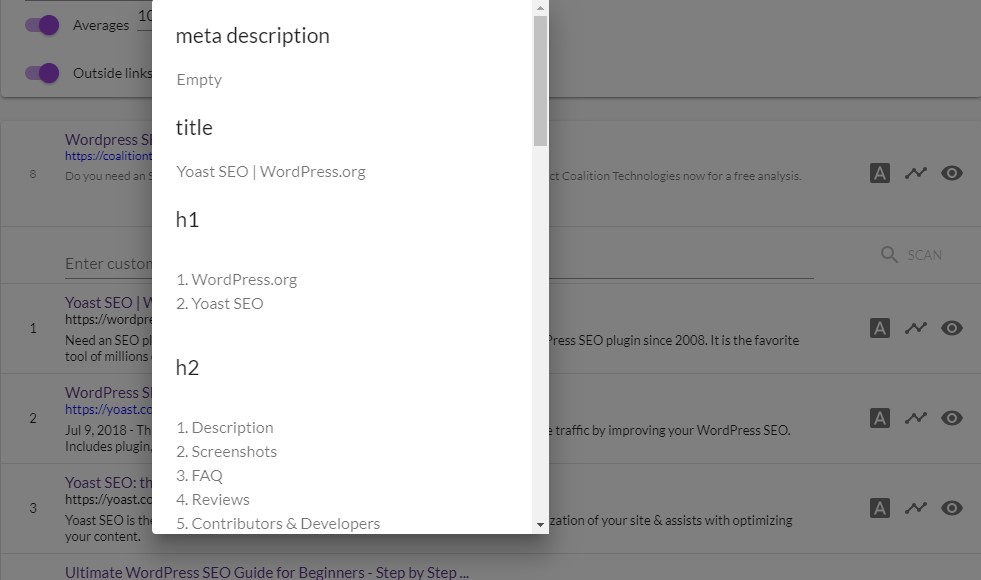How to Streamline Your SEO Content Creation Using SurferSEO

With lots of blogs creating killer content and promoting them at breakneck speed and efficiency, you’ll just play catch-up with them. It’s difficult enough to write content that drive traffic and engagement from your audience. It’s another thing to spend time promoting each one on different online channels.
However, instead of doing the same thing every blogger is doing, you need to go the road less-traveled. Therefore, when developing SEO content creation process, you need to plan and optimize your content using a different method to increase your chances of ranking on top of Google search.
In this post, you will learn what SurferSEO is and how it can help you jumpstart your SEO content creation and reach more people on organic search.
Building an SEO content creation strategy the right way
[bctt tweet=”Learn how you can refine your SEO content creation process to whip up optimized blog posts using the data provided by SurferSEO.” username=”blogherald”]You need to put thought into your SEO content creation. You can’t just write a post out of thin air and wait for the next time inspiration strikes.
A great SEO content creation workflow requires you to not only create killer content but also produce it as a consistent rate. To generate visitors, you need to temper their expectations with your blog. By creating an editorial calendar that lets you plot out your blogging schedule that stretches for weeks and months, you can consistently churn great content your readers love.
More importantly, you need to approach content strategy with a strategy in mind. You must leverage all available factors at play so your content reaches a greater number of readers. This is true for SEO content since you can sustain a steady traffic if you rank on the first page of search results at the very least.
To do this, you need to a tool that will unearth the best possible SEO data to help you write content with a strategy in mind.
You need SurferSEO.
What is SurferSEO?

SurferSEO is a new tool that lets you search for your target keywords and analyzes the data based on the results of the search. While it sounds just like any other tool in the market, SurferSEO provides a comprehensive breakdown of the SERPs based on different ranking factors. If you interpret the information correctly, you can pattern your content according to the ones performing at the highest level.
How to use SurferSEO
Currently, SurferSEO is in beta mode and is free for use. I’m not sure when they’ll eventually require users to pay for it on a monthly basis, but knock yourself out using this tool while it’s free.

Once you’re logged in, you must enter the keyword you want the tool to analyze. If you’re not sure the keywords you need to analyze and optimize for your blog, read this post I wrote at OMHubInfo. You have a daily limit of five keywords to analyze so use the allocated quota for your account wisely.

Once you have entered the keyword, the tool will show you a line graph of the data found on the left sidebar. Clicking on the boxes of each item or factor will add new lines to the graphs to help you visualize the information
There are three categories that SurferSEO analyzes from the SERPs:
- Structure – It shows how the post is constructed. You will see the number of words, characters, and keyword density in the title, meta data, and content of the pages ranking for the keyword.
- Quality – It shows the different factors that affect page speed in the content such as page size and character count.
- Media – It shows the number of elements and images the post has. It considers elements from the entire page and not just from the content.
You can include as many elements as you want in the graph but avoid adding too much as it makes the graph very difficult to read.
What makes SurferSEO great is it helps you identify the ranking factors with the highest correlation. The most relevant factors are marked green on the left sidebar. It means you need to take these factors into consideration when creating your content.

You can dig deeper by clicking on the “A” icon from each search result below to see the metadata, title, and headings each page has.
Another powerful feature of SurferSEO is the Averages feature. By default, the Averages is turned on and is set to 10. It means that the x axis (the horizontal line of the graph) clusters the pages by 10. Therefore, when interpreting the information using the default settings, you are getting the average figures of the first ten pages of Google results for each factor. You can change the Averages to any number you desire. But by analyzing the SERPs by 10, you see the average data of each page (10 results) on Google search.
Also, if you have a newly published page and want to compare it with the ones ranking for your target keyword, you can enter it on the “Enter custom URL” bar to see how your site measures up to others based on factors with the highest correlation.
Synthesizing your blog content strategy using SurferSEO
Once you’ve analyzed the keyword using SurferSEO, you need to convert the data into action to help you build your blog content strategy.
For starters, track the ranking factors with the highest correlation according to the tool. However, instead of creating content with more characters, words, and keyword density than the ones ranking on top, you need to follow the averages governing the first 10 results, which is the first page of Google search. For example, if the average number of words for the first 10 pages is 3,000 words, then create content that has a similar number of words. Using the data allows you to prevent over-optimizing your content.
Also, there are other factors that go beyond your content. For example, if loading time under site speed has a high correlation and your content is slower compared to the rest, you may need to consider moving to a faster web host or using a CDN.
Lastly, if you want a more visual breakdown of SurferSEO, add “/report” at the end of the URL. The tool will generate a handy report that you can keep as part of your records in your SEO content creation.
Ready to take your SEO content creation to the next level?
Using SurferSEO, you can create content that checks all the boxes of an optimized content primed to rank for your target keyword as part of your white hat SEO strategy. Use the tool for your editorial calendar and mark the factors you need to consider when building content, i.e. number of words, characters, keyword density, and more.
Also, I need to mention again that SurferSEO is in beta mode. Some features may not work in the meantime as the developers are working hard to improve the tool’s usability. However, this should not dissuade you from signing up and trying out the tool’s powerful features to ramp up your content strategy for your blog!
Related posts:
Focusing on Writing About 1 Category May Be the Best Content Strategy for your Blog
Why Marketing Your Blog Should Be Like Launching A Revolution
Freelance writer for hire by day. Heavy sleeper at night. Dreams of non-existent brass rings. Writer by trade. Pro wrestling fan by choice (It's still real to me, damnit!). Family man all the time.

